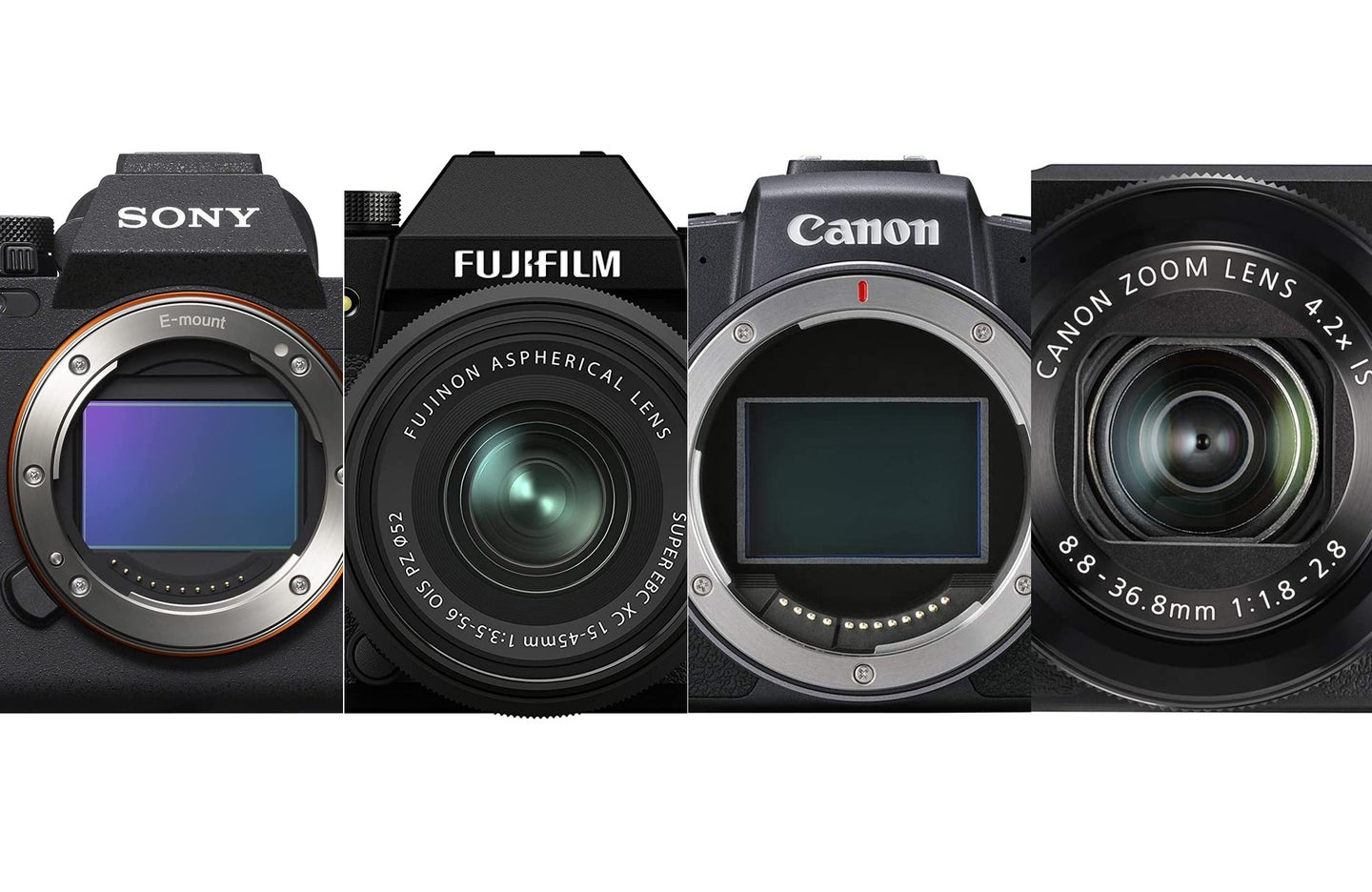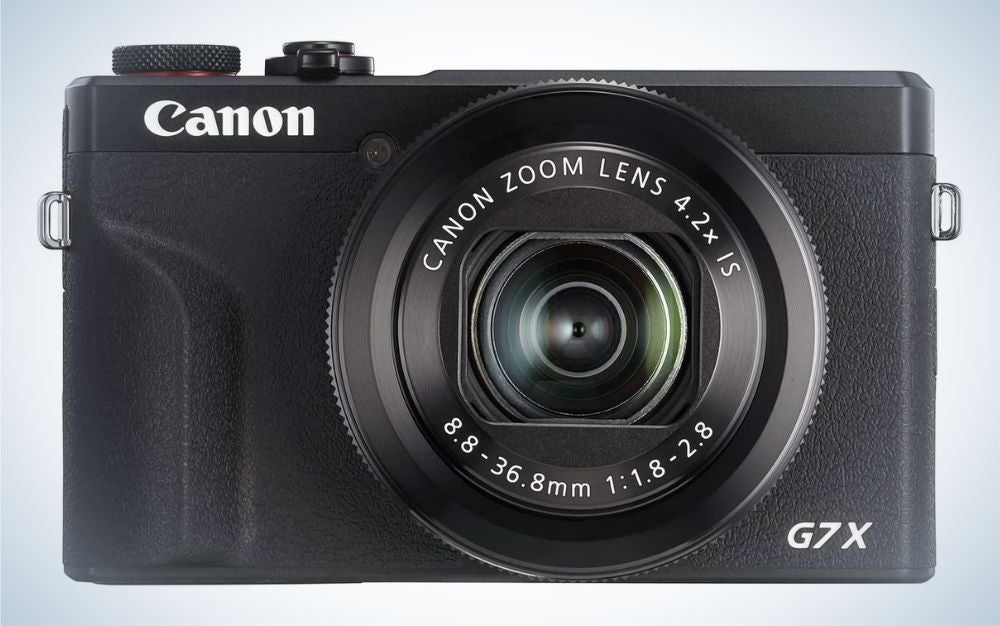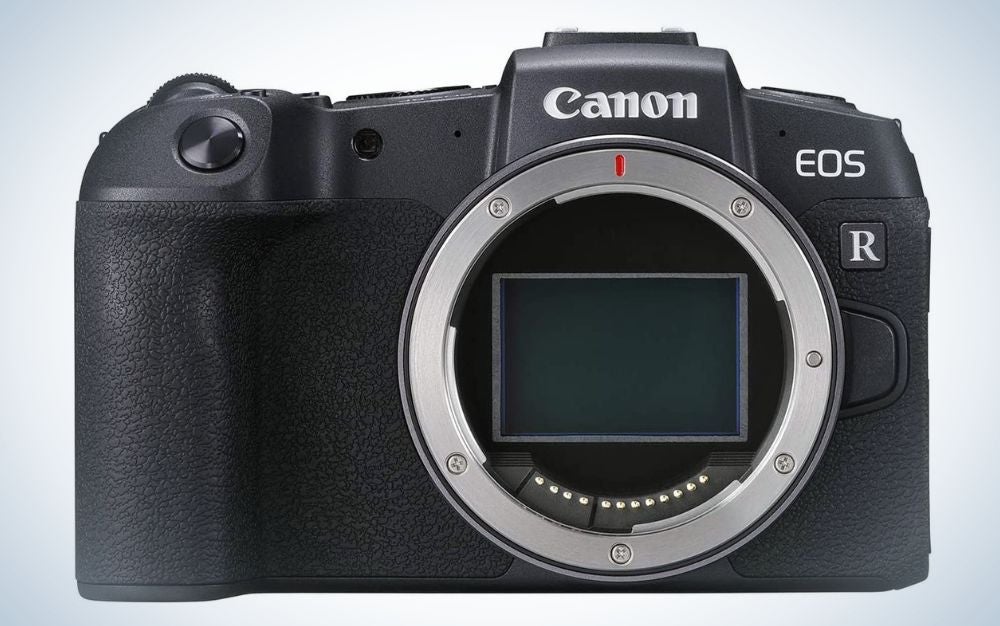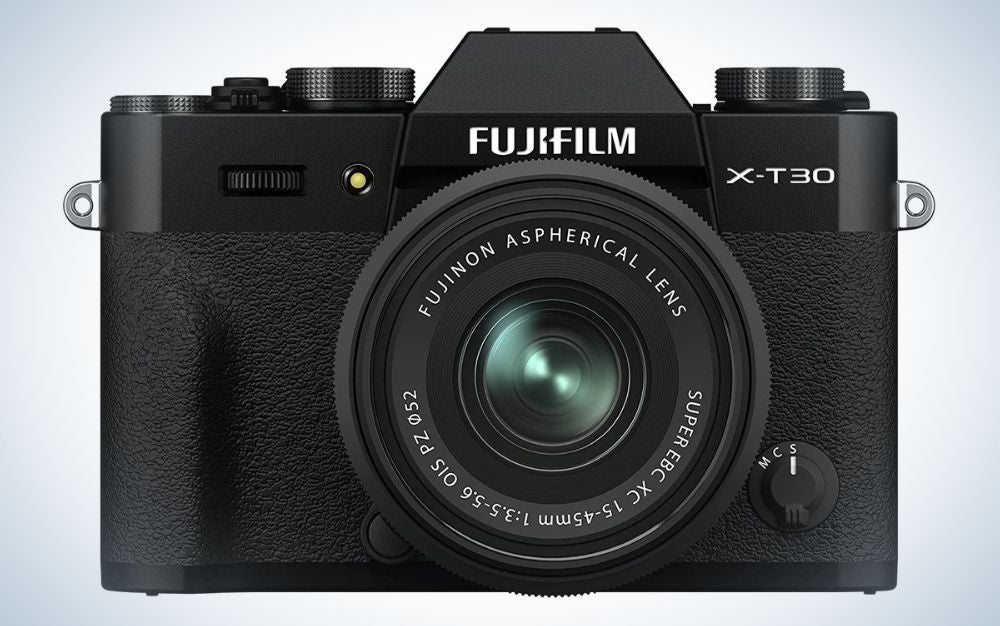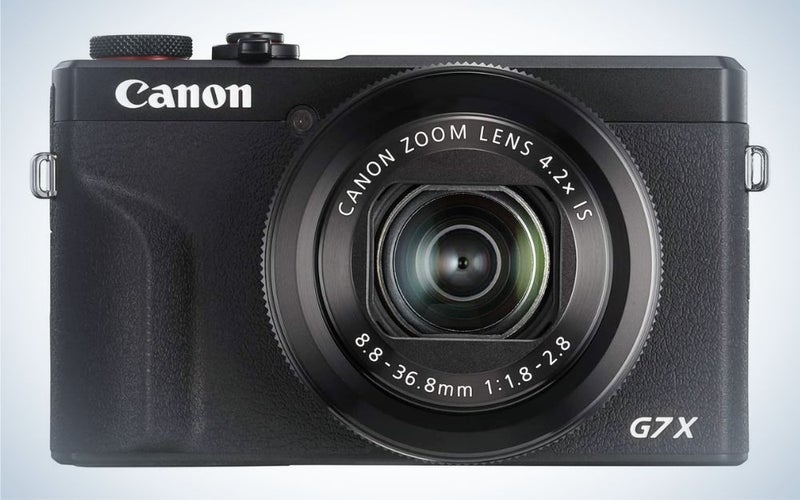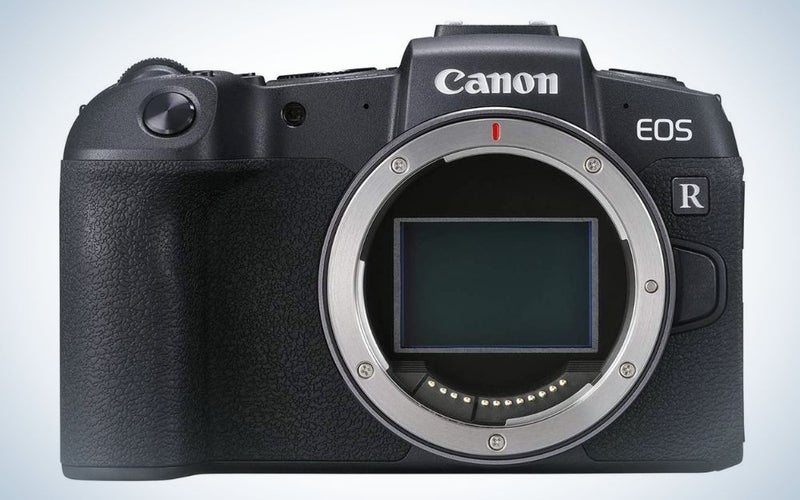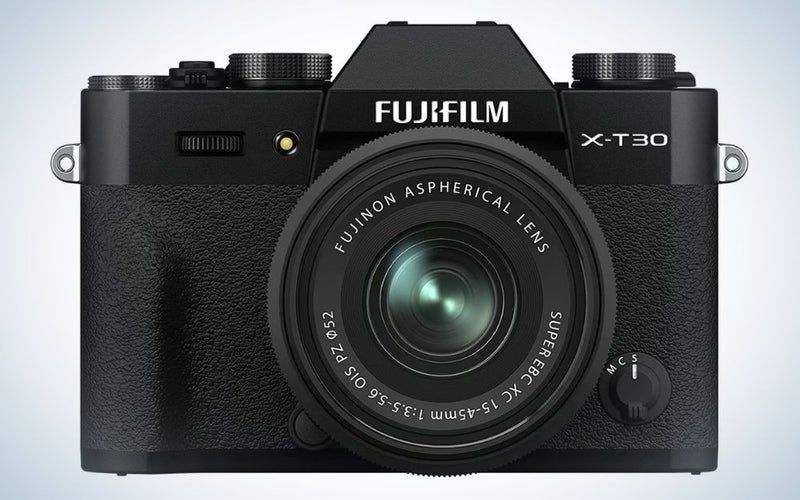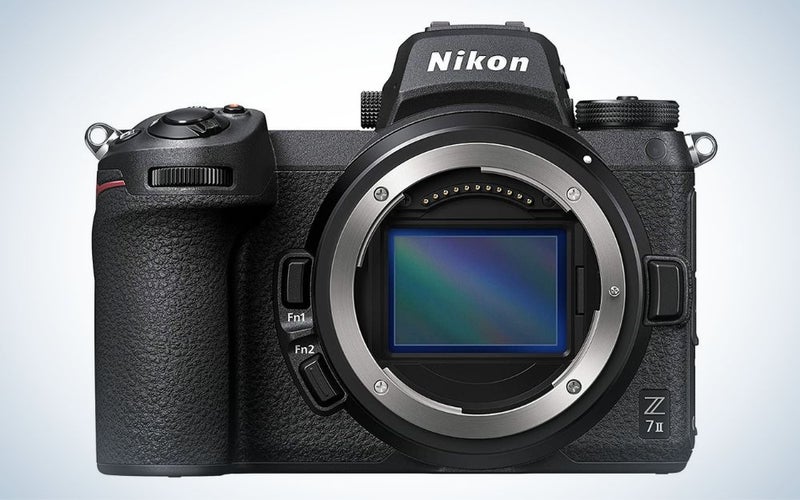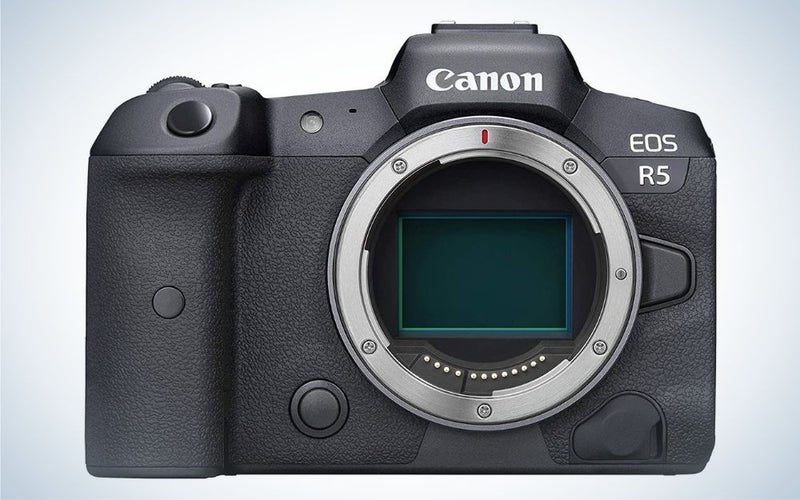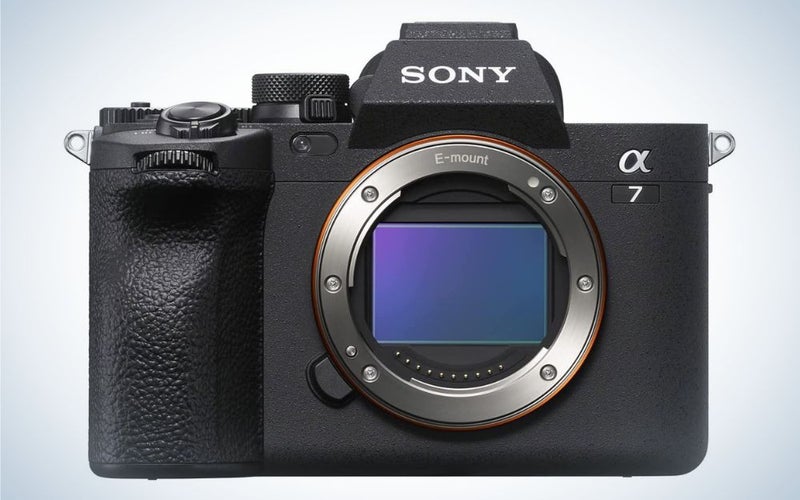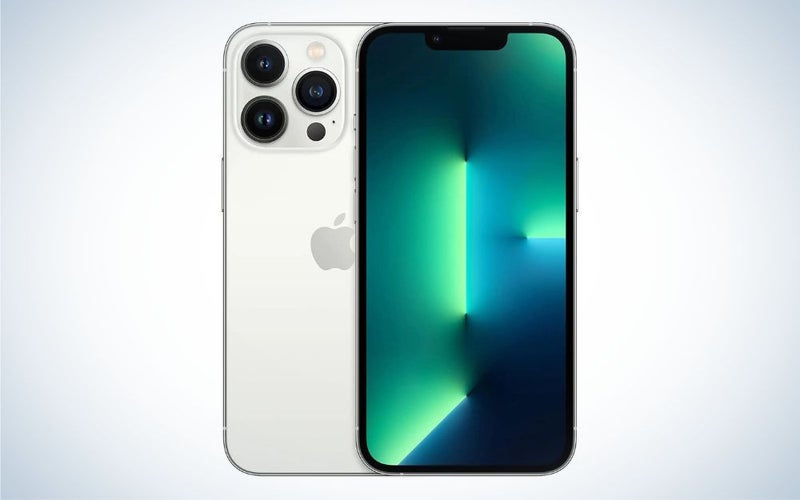We may earn revenue from the products available on this page and participate in affiliate programs. Learn more ›
Lots of people buy cameras for food photography adventures. Smartphones go a long way when it comes to documenting a meal, but dedicated cameras unlock all kinds of creative potential. In fact, some restaurants spend thousands of dollars every year trying to make sure their food is Instagram-worthy. The best cameras for food photography offer a few specific features that make them particularly adept at capturing images in a culinary setting.
- Best compact: Canon PowerShot G7X III
- Best for beginners: Canon RP
- Best budget: Fujifilm X-T30 II
- Best Nikon: Nikon Z7 II
- Best Canon: Canon R5
- Best Sony: Sony A7 IV
- Best smartphone: iPhone 13 Pro
How we picked the best cameras for food photography
I have been reviewing and writing about cameras for Popular Photography since 2008. I have also been working as a professional photographer for nearly two decades. I have shot food photos that have run in national magazines including Edible and Saveur.
For this list of the best cameras for food photography, I relied on my personal experience (I’ve shot with most of these cameras), editorial reviews, user feedback, and spec comparisons. Because food photography is such a rich and varied practice, I mostly picked cameras with solid overall performance. They can thrive when shooting food at the table or in the kitchen documenting the preparation process.
The best cameras for food photography: Reviews & Recommendations
Best compact: Canon PowerShot G7X III
Canon
Why it made the cut: A versatile lens and relatively large sensor make this camera a strict upgrade over your smartphone despite keeping the controls nice and simple.
Specs:
- Megapixels: 20.1
- Sensor size: 1-inch
- Lens mount: N/A
- Rotating screen: Tilts 180 degrees upward
- Viewfinder: No
Pros:
- Fast 24-100mm equivalent zoom lens
- Built-in flash for super-dark locations
- Tilting screen for shooting at weird angles
- Very compact
- Affordable compared to system cameras
Cons:
- No interchangeable lenses
Camera manufacturers used to offer dozens of different models with a broad spectrum of features. Smartphones put an end to that. Canon’s advanced compact, however, still offers some compelling reasons to choose it over the camera inside your phone.
The G7X III offers a 1-inch sensor, which is larger than the vast majority of smartphone chips, which typically translates into blurrier backgrounds and better low-light performance. The attached lens acts like a 24-100mm f/1.8-2.8, which should cover just about any situation inside or outside of a restaurant.
It offers full manual controls for creative photography and it captures raw images so you can go into the edit with as much image data as possible. A built-in flash can illuminate your subject in a pinch when things get too dark. And it’s a real flash, not a glorified LED flashlight like you get with a smartphone.
This is a full-featured camera that easily fits into a large pocket and won’t draw a ton of attention to you as you try to get the composition on your dumplings just right.
Best for beginners: Canon RP
Canon
Why it made the cut: Canon’s entry-level full-frame mirrorless camera offers solid low-light performance in a very compact body.
Specs:
- Megapixels: 26.2
- Sensor size: Full-frame
- Lens mount: Canon RF
- Rotating screen: Fully articulated
- Viewfinder: Yes
Pros:
- Full-frame sensor at a surprisingly low price
- Excellent image quality
- Fully articulated screen
- Versatile lens mount
- Compact
Cons:
- Limited tactile controls
Canon’s smallest and lightest full-frame camera provides very high image quality considering its cost. The body alone costs just under $1,000, which is impressive for a full-frame model.
It offers a 26.2-megapixel resolution, which allows for plenty of cropping if you’re going to post a photo online. It employs Canon’s excellent color science, which produces natural, accurate colors, especially when shooting raw.
Its native RF mount provides access to all of Canon’s new lenses, while the $99 first-party adapter makes just about every old Canon EF DSLR lens compatible with almost no performance penalty. The fully rotating screen is a nice touch, too. It simplifies shooting at just about any angle. This is a great option for someone coming from the Canon DSLR system or looking to buy into the new Canon mirrorless cameras.
Best budget: Fujifilm X-T30 II
Fujifilm
Why it made the cut: You can get the camera and a kit lens for less than $1,000. It performs well above that price tag.
Specs:
- Megapixels: 26.1
- Sensor size: APS-C
- Lens mount: Fujifilm X
- Rotating screen: Tilting
- Viewfinder: Yes
Pros:
- Very compact
- Excellent tactile controls
- Beautiful lenses
- Unique Fujifilm color performance thanks to the X-trans sensor
- Ample processing power for solid low-light performance considering the sensor size
Cons:
- Desirable lenses can get pricey
The Fujifilm X-T30 II borrows some of its best features from more expensive bodies in the company’s line. It offers a 26.1-megapixel X-Trans sensor, which offers Fujifilm’s unique color rendering. The film emulation modes provide a surprisingly natural and punchy look right out of the camera. That comes in handy if you want to dump images straight from the camera to your phone for immediate posting.
The body mimics a small DSLR style, which feels great in your hand. Fujifilm still offers aperture rings on its lenses, which I love. The camera offers a shutter speed dial, a mode dial, and an exposure compensation dial right on the top of the body so it’s simple to change your settings in a hurry without having to look at what you’re doing.
The screen doesn’t fully rotate, but it does tilt, which is good for low-angle shots without having to crawl under the table. Even if you plan to take this camera out in the world to photograph subjects that move a lot faster than a stationary grilled cheese sandwich, the X-T30 II’s advanced autofocus system will have no trouble keeping up. This is a truly great little camera.
Best Nikon: Nikon Z7 II
Nikon
Why it made the cut: Nikon’s high-end full-frame camera offers ample resolution to capture every last bit of detail on the plate.
Specs:
- Megapixels: 45.7
- Sensor size: Full-frame
- Lens mount: Nikon Z
- Rotating screen: Tilting
- Viewfinder: Yes
Pros:
- Lots of resolution at 45.7 megapixels
- Lots of tactile controls
- Exceptional metering system and scene control
- Solid color performance
- Relatively compact considering its features
Cons:
- Expensive
- Bring lots of memory cards
The Z9 may be Nikon’s flagship mirrorless camera, but the Z7 II is just as adept when it comes to food photography. At 45.7-megapixels, the Z7 II provides plenty of resolution for deep crops or large prints. Pair it with one of Nikon’s modern lenses and it can pull downright absurd amounts of detail out of a scene.
There are two image processors inside the Z7 II body. They team up to provide speedy shooting and very clean images, even in low-light situations. In-body image stabilization comes in very handy for food as it allows you to use a slightly longer shutter speed without having to worry about motion blur creeping into the photo.
This camera doesn’t come cheap, of course. If you’re not willing to shell out for a Z7 II, the older Z6 still offers many similar features with a reduced megapixel count. What you’ll give up in resolution, you’ll make up for in money left in your restaurant budget.
Best Canon: Canon R5
Canon
Why it made the cut: Lots of resolution and a fully articulated screen make this a food photography powerhouse.
Specs:
- Megapixels: 45
- Sensor size: Full-frame
- Lens mount: Canon RF
- Rotating screen: Fully articulated
- Viewfinder: Yes
Pros:
- Extremely high image quality
- Los of resolution
- Versatile rotating screen
- Canon color science
- Advanced video features
Cons:
- Expensive
Canon’s high-end mirrorless workhorse is a great option for pro-grade food photography. Its 45-megapixel sensor pairs with two image processors for extremely high overall image quality. Canon equipped the R5 with a top-mounted display, which makes it easy to check settings even when you’re not looking directly at the screen or through the viewfinder.
The layout offers several customizable dials and buttons, which make navigating the controls simple. Advanced video features like 8K video and raw video capture could come in handy down the road if you want to expand beyond still images into food vlogging. The fully articulated screen will come in handy there as well.
From a pure spec standpoint, this is the food photography camera to beat in terms. Its pure performance and high resolution make it the most versatile option for a pro in this field and I’ve personally used it for several food magazine shoots in the past year.
If you can’t shell out for the R5, the Canon R6 offers many of the same features at a lower price. It will cut the resolution down to 20 megapixels so you’ll want to be careful with your framing because you won’t be able to crop as much.
Best Sony: Sony A7 IV
Sony
Why it made the cut: Sony’s do-it-all mirrorless camera has everything a food photographer needs inside and outside of the restaurant.
Specs:
- Megapixels: 33
- Sensor size: Full-frame
- Lens mount: Sony E
- Rotating screen: Fully articulated
- Viewfinder: Yes
Pros:
- 33 megapixels represents a nice balance of resolution and efficiency
- Excellent low-light performance
- Accurate autofocus
- Improved menus compared to older Sony models
- Fully articulated screen
Cons:
- Some shooters prefer other brands’ color science to Sony’s
Sony’s A7 IV is one of the best mirrorless cameras on the market at the moment. It sports a balanced set of features that make it comfortable in pretty much any shooting situation. With 33 megapixels at its disposal, it strikes an excellent balance of resolution and efficiency. You won’t need to bring a whole wallet full of memory cards with you to shoot a ton of photos. But, you’ll still have plenty of room to crop during editing.
Sony has drastically improved its menu experience with recent models and the A7 IV provides solid tactile controls thanks to customizable buttons and dials. The screen fully articulates, which is a great point in its favor here. The rotation really does come in handy more than the simple tilting displays.
While the advanced AF system may not get much use during food shoots, it can be handy if you’re photographing chefs in action or other food-related activities. This is a great all-around camera that’s right at home in a restaurant setting.
Best smartphone: iPhone 13 Pro
Apple
Why it made the cut: Raw capture and the new picture styles help tame some of the overly ambitious HDR that can make food photos look gnarly with other smartphones.
Specs:
- Megapixels: 12
- Sensor size: N/A
- Lens mount: N/A
- Rotating screen: It is a screen
- Viewfinder: No
Pros:
- Fast, constant aperture
- Very close focus
- Raw capture and new photo styles make for more natural images
- Low-light modes work well in many circumstances
Cons:
- HDR can still be overzealous in mixed lighting
Lots of smartphone manufacturers have equipped their cameras with bells and whistles, but I still consider the iPhone the champ when it comes to overall photographic performance. While overzealous HDR that makes photos look unnatural still rules in the smartphone camera world, Apple has given shooters more control when it comes to toning it down. The iPhone 13 Pro offers raw capture as well as new picture modes that produce poppier images with more contrast. It looks more like what you’d get out of a dedicated camera.
From a hardware standpoint, the camera module offers three cameras. The standard wide-angle offers an extremely fast aperture and relatively large sensor. The ultra-wide angle gives a borderline fisheye perspective. The telephoto lens offers a slower aperture, but a naturally tighter field of view. I still find the main wide-angle camera performs best in almost every situation, but the telephoto camera has improved in recent models.
There are a few drawbacks. The HDR function can amplify the ugly effects of mixed light, which make food look unappetizing, but that happens with smartphone cameras across the board. The 12-megapixel resolution is also still relatively low, so compose carefully.
Still, in most lighting conditions, it’s tricky to take a truly bad food picture with the modern iPhone camera.
Things to consider when shopping for the best cameras for food photography
Before we get to the category picks, here are some essential terms and features to look out for. Understanding these variables will give you a solid base for making an informed decision.
Resolution
Megapixels aren’t everything. Just because a camera comes packing a ton of pixels doesn’t mean it’s going to give you the photos you want. With food photography, however, extra resolution really can come in handy. Good food photography doesn’t skimp on details. You want your viewers to feel like they could reach out and touch the subject (and then eat it). Those extra megapixels come in handy for printing images. More importantly, however, higher-resolution images allow you to crop the photo in post to get exactly the right composition.
If there’s a particularly delicious detail you want to emphasize, you can simply crop into it to get rid of other distracting elements.
Low-light performance
Commercial food photographers rely on carefully curated lighting setups to highlight the grub’s best qualities. When you’re having dinner in a restaurant, however, you can’t bust out the big lights and bother everyone around you. That’s why low-light performance is crucial to consider when shopping for the best cameras for food photography.
Cameras with larger full-frame sensors typically excel in darker settings, which can give them an advantage over their APS-C (and smaller) competition. Larger sensors simply gather light better and often offer larger pixels. That translates into cleaner images with less noise, even in tricky lighting situations.
Rotating screen
As with just about every type of photography, angles are crucial when shooting food. The most common angles include eye-level to give a natural viewpoint, table-level to make the food look massive, and directly overhead to show the food in its natural setting. Almost all of those angles are a lot easier when you have a rotating screen to work with.
Mirrorless cameras don’t lose any of their functionality when you switch over to live view mode, so shooting with a rotating screen is all upside. You don’t have to slink down or climb up on your seat in order to get a unique perspective. That rotation comes in even handier if you’re ever planning to shoot video.
Lens selection
Food doesn’t move very much. That makes it a pretty ideal photography subject for people who like to take careful control of their shots. Getting the right angles requires the proper glass, however. Even the best cameras for food photography aren’t very useful without a lens attached.
Mirrorless cameras have made it simple to adapt old glass to modern bodies and that’s great for food shooters. Macro lenses are classic when it comes to shooting food and there are tons of solid, cheap options out there that easily adapt. Because the food sits still, you can nail your manual focusing without worry.
Older brands like Canon and Nikon also have some advantages in their huge backlog of native DSLR lenses. With the first-party adapters, they come with almost no downside, so you can build your lens collection slowly over time with older glass.
FAQs
Q: Do I need a full-frame camera for food photography?
You do not. While most of the cameras on this list have full-frame sensors, you can get great food photography with just about any camera. It really depends on the lens, the food, the lighting, and (more than anything) your technique. Learn how to use whatever camera you have and you can make great food photography.
Q: What focal length is best for food photography?
It really depends on what you’re going for. I like a 24-70mm f/2.8 zoom lens when I do magazine food shoots because it allows me to work around the scene. I can use the wider focal lengths to capture overhead shots of the food in its environment. I can use the longer focal lengths to make the hero shots and show details. I’ll also typically bring a macro in the 50-100mm range in order to show really tight details. If you can only pick one focal length, I think 50mm is the way to go. You can crop the image if you want to go tighter, but you can still realistically hold it up over a table and take a shot of the scene without feeling too tight.
Q: What camera do professional food photographers use?
The Canon R5 and Nikon Z7 II on this list are common pro cameras for food photography. The Sony A7 IV is more than capable, too. Some food photographers who make their money on Instagram rely purely on their phone. On very high-end jobs, you may find pros using medium format digital cameras made by Phase One or Hasselblad, but that’s mostly in the studio because they’re bulky and cumbersome to carry on a trip out to a restaurant.
Q: How much do the best cameras for food photography cost?
The cheapest camera on this list is $750, but basically any camera will do. It’s all about how you use it. The most expensive camera on this list is nearly $3,900, but that gets you a lot of flexibility and resolution, which is important to professionals. What good are the best cameras for food photography if you don’t have any money left to go buy food?
Final thoughts regarding the best cameras for food photography
Any solid all-around camera will likely provide excellent food photography. There are some features that will make your life easier, though. A fully articulated screen, solid low-light sensor, and compact design will all come in very handy when trying to flatter your flan. The Canon R5 is your best option if you’re looking for professional work, but the Fujifilm X-T30 II is an excellent value for its featureset.
